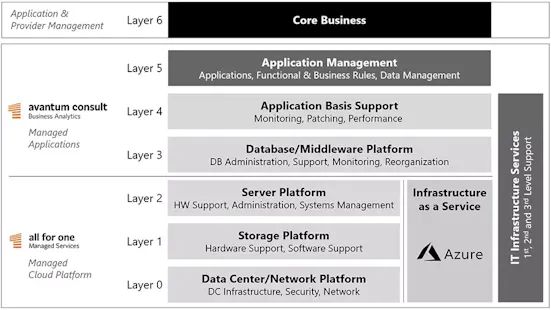
SUPPORT & OPERATIONS
Cloud Transition
The advantages of a cloud transition:
Connect business partners, employees or interested parties worldwide.
Reduce the cost of analytics systems
Avoid technical disruptions caused by outdated systems
Increase the expertise of your employees
Our offer
Cloud-based services
In a cloud-based service model, you concentrate on your core business or your activities regarding the BA systems are limited to provider management. The service provider takes care of your IBM applications and the associated cloud platforms, for example.

We offer you the services for BA Application Management and Cloud Platform Management from a single source. This ensures optimally coordinated and functioning processes and reduces the communication effort. With Managed Applications and Managed Cloud Services, you have complete coverage that includes all relevant services.
Managed Applications Service
Managed Cloud Platform Service
the procedure
Cloud transition in detail
You have decided to transfer your BA systems to a cloud-based service model - we show you how the cloud transition can proceed step by step.
Design
Planning
Implementation
Testing
Handover
Operation
